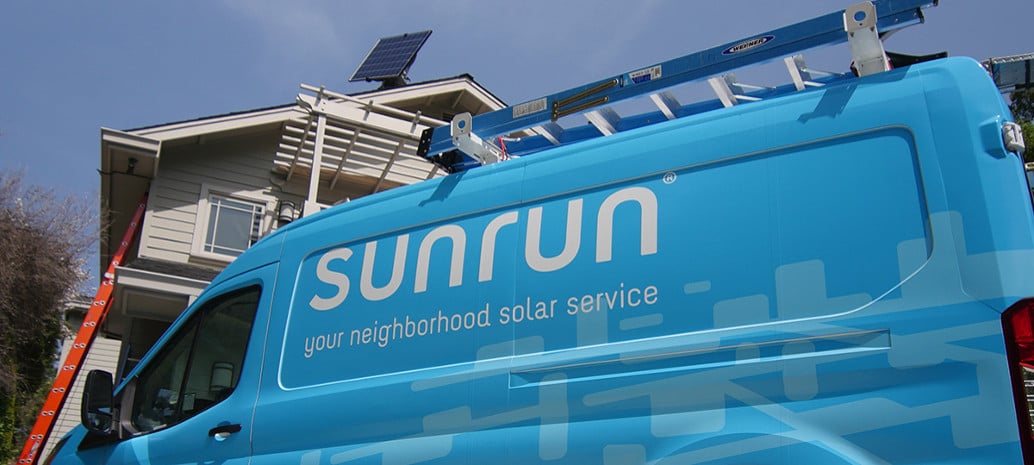Electricity experts have been talking for a long time about a future where the power grid runs largely on distributed resources including rooftop solar and batteries. And while behind-the-meter solar has been supplying energy for some time, it has not widely been recognized for its ability to provide capacity – in other words to meet the need for steady, predictable power when it is most needed.
But this is changing, and fast.
In February, Sunrun won a bid to provide 20 MW of capacity from the company’s residential solar + storage systems to the grid operator in New England. And late yesterday, the company followed that by announcing that it has won a contract from East Bay Community Energy (EBCE) to supply capacity from 500 kW / 2 megawatt-hours of batteries paired with solar installations on low-income housing, under a 10-year contract.
Sunrun plans to install these PV systems and batteries by 2022. This is the first time known to pv magazine that a community choice aggregator (CCA) has signed a contract to buy capacity from behind-the-meter resources, but it might not be the last.
“This project sets a precedent for how distributed energy resources, such as solar and storage, can offer financial and environmental benefits within our community,” said Nick Chaset, the CEO of EBCE.
CCAs are taking over more and more of the procurement from California’s utilities, and are required to meet local resource adequacy requirements. And because the CCA movement in California is driven by both a desire for local control and explicit aims to accelerate the transition to renewable energy, these entities are more likely to prefer behind-the-meter solar.
There is plenty of this resource available; Sunrun’s estimates show that at today’s costs, solar on residential buildings and businesses could provide 9 GW of capacity in California.
And it is not only CCAs that are interested in using batteries to meet capacity needs; National Grid has started a program in Massachusetts and Rhode Island to pay battery owners to meet demand during summer peaks. Sunrun additionally notes that in addition to these formal contracts, that it has been providing capacity under other structures, including through participation in “Bring Your Own Device” utility demand response programs.
Replacing gas peakers with batteries
This is one of three contracts that EBCE has awarded through a recent competitive solicitation, for a total of 112 MW of solar and 7.5 MW of battery storage. The Sunrun contract and another agreement with esVolta covering 7 MW of batteries are part of the Oakland Clean Energy Initiative (OCEI), which aims to replace a 40-year old petroleum-fired power plant in downtown Oakland with clean energy.
The OCEI was started by now-bankrupt utility Pacific Gas & Electric Company (PG&E), which received regulatory approval in March of last year to replace the plant with 20-45 MW of “clean energy”, which could include renewable energy, energy efficiency and demand response.
However, since that time EBCE has become involved in the project, and the contract with esVolta is a contingent on a joint purchase with PG&E.
OCEI is one of several examples where portfolios of clean energy resources, including renewable energy, battery storage, demand response and other solutions are out-competing both new and even existing fossil fuel-fired power plants in California. Most of the time this means gas peakers.
However, this is not necessarily playing out in other parts of the United States. There is evidence that in many cases these clean energy portfolios are less expensive than new gas peakers, but often regulators do not appear to be listening.
A public service commissioner in Michigan admitted that state regulators did not seriously consider other options before allowing DTE Energy to build a new gas plant, and the New Orleans City Council has given Entergy permission to build a new gas plant despite a scandal involving the use of paid actors and evidence that other solutions would meet this need more cheaply.
This content is protected by copyright and may not be reused. If you want to cooperate with us and would like to reuse some of our content, please contact: editors@pv-magazine.com.









By submitting this form you agree to pv magazine using your data for the purposes of publishing your comment.
Your personal data will only be disclosed or otherwise transmitted to third parties for the purposes of spam filtering or if this is necessary for technical maintenance of the website. Any other transfer to third parties will not take place unless this is justified on the basis of applicable data protection regulations or if pv magazine is legally obliged to do so.
You may revoke this consent at any time with effect for the future, in which case your personal data will be deleted immediately. Otherwise, your data will be deleted if pv magazine has processed your request or the purpose of data storage is fulfilled.
Further information on data privacy can be found in our Data Protection Policy.